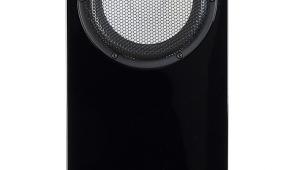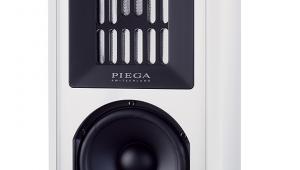Wilson Audio Alexia V Loudspeaker

 It's V for Victory as Wilson's Alexia loudspeaker is more than simply 'tickled-up' with a host of detailed revisions
It's V for Victory as Wilson's Alexia loudspeaker is more than simply 'tickled-up' with a host of detailed revisions
Ah, the sweet spot! Positioned in the exact middle of a seven-model range of Wilson Audio floorstanders, between the Sasha DAW [HFN Mar '19] and Alexx V [HFN Jan '22], the new Alexia V – by accident or design – now occupies that most coveted of spaces. One of hi-fi's inexplicable phenomena, a 'sweet spot' seems to exist in pretty much every hi-fi model range, from turntables to amps to speakers, when a stand-out in performance relative to size and cost just happens. Yes, the new Alexia V is that special.
Starting at £79,998 per pair, the Alexia V is priced at roughly double that of the Sasha DAW below it at £44,998, but half that of the £158,000 Alexx V. As with all Wilson Audio's speakers, pricing depends on the three levels of WilsonGloss finish (enhanced by matching or contrasting grilles). There are four standard colours – dark Galaxy Gray, the lighter GT Silver, the champagne-y Quartz and the near-black Carbon. A dozen more exotic colours including shades of orange, red, yellow, blue, some black hues, etc, are offered by way of upgrade at +5% while the ten deluxe Premium Pearl finishes are an extra 10%.
Custom RAL colours are available to special order, including the gorgeous, captivating Spearmint – or Robin's Eggshell Blue depending on your relationship with Pantone charts – of our review pair. Suffice it to say, everyone who laid eyes on this finish was charmed by the freshness.
Upgrade Path
Occupying 129x40x61cm (hwd) without its spikes, the Alexia V is only slightly larger than a Sasha DAW at 113x36x58cm (hwd). It thus represents a logical upgrade for Sasha DAW owners if so inclined, with only the need for extra cash rather than more space. And they look so similar that a move from Sasha DAWs to Alexia Vs might go unnoticed, especially the side view, with the Alexia V sporting the 'woofer blade' cut-outs at the top of the lower housing. They may look like handy handles, but they are not: a complete Alexia V weighs 120kg, most of which is the section they crown.

Decades Of Design
Part of what distinguishes the Alexia V from its little sister, among other things, is an adjustable tweeter module. While the Sasha DAW employs a bass enclosure topped by a truncated pyramid for mid and treble drivers, a tradition dating back to the original WATT/Puppy of three decades ago, its top section is a single piece. So, while the Sasha DAW's top tilts, in the Alexia V the midband and treble can be precisely positioned relative to the listener to achieve the best time alignment. This is key to understanding the Wilson ethos, just as electrostatics once defined Quad, and it's a philosophy that dates back to the original WAMM of 40 years ago.
All Wilson drivers are proprietary, manufactured to their specific requirements. Inside the bass enclosure, which sits on the fully height-adjustable Acoustic Diode spikes, are one 10in and one 8in woofer; the Sasha DAW uses two 8in woofers. The upper housing contains the 7in cellulose fibre/carbon composite midrange unit as initially found in the WAMM Master Chronosonic and used in the Alexia 2 [HFN Mar '18], but is now further improved by the incorporation of the Alnico QuadraMag magnet. The treble enclosure hosts a 1in silk-dome tweeter.
The Big Country
In the two installations where I auditioned the speakers, they were located well away from the walls, enabling them to 'breathe', so to speak. The woofer cabinet is rear-ported and the midrange module vented, and the speakers can work nearer to the walls with judicious positioning, but – like free range eggs – everything improves with wide-open spaces, as if in homage to the vast plains in America's West, where these were born.
Give free rein to the Alexia Vs, and you will hear from the first seconds of play that most immediate manifestation of its capabilities – an enormous, coherent and convincing soundstage. One could, I suppose, bi-/tri-wire or bi-/tri-amp the Alexia V with some external high-end crossover and lateral thinking, as the bass, mid and treble sections are accessible via their own binding posts, but that defies the resolutely 'single-wire' attitude of Wilson Audio. When I once asked founder Dave Wilson about it at a CES in Las Vegas, during the height of the bi-wiring/bi-amping craze, he matter-of-factly told me, 'Ken, we want less wire, not more'.
Instead, at the top of the woofer enclosure, two short, separate cables exit to connect to the upper module. One feeds the midrange module, the other the tweeter, emerging on either side of the aluminium positioning gauge and 'staircase' that sets the 'tip' of the mid/treble head assembly. All these various fittings look so 'heavy duty' that they scream 'military spec'!
























































